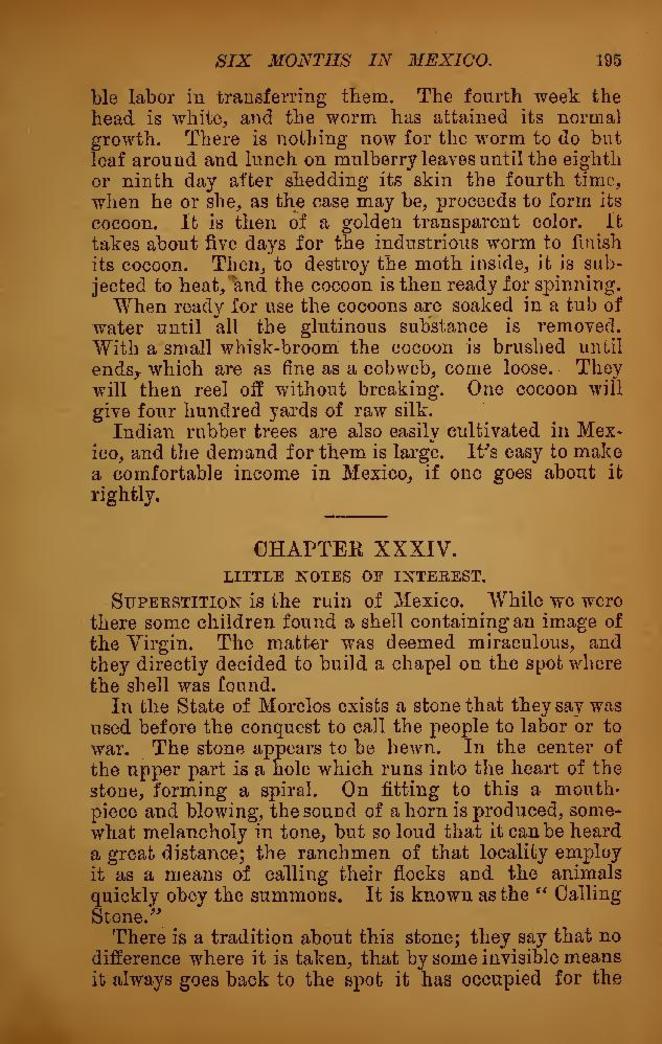ble labor in transferring them. The fourth week the head is white, and the worm has attained its normal growth. There is nothing now for the worm to do but loaf around and lunch on mulberry leaves until the eighth or ninth day after shedding its skin the fourth time, when he or she, as the case may be, proceeds to form its cocoon. It is then of a golden transparent color. It takes about five days for the industrious worm to finish its cocoon. Then, to destroy the moth inside, it is subjected to heat, and the cocoon is then ready for spinning.
When ready for use the cocoons are soaked in a tub of water until all the glutinous substance is removed. With a small whisk-broom the cocoon is brushed until ends, which are as fine as a cobweb, come loose. They will then reel off without breaking. One cocoon will give four hundred yards of raw silk.
Indian rubber trees are also easily cultivated in Mexico, and the demand for them is large. It's easy to make a comfortable income in Mexico, if one goes about it rightly.
CHAPTER XXXIV.
LITTLE NOTES OF lNTEREST.
Superstition is the ruin of Mexico. While we were there some children found a shell containing an image of the Virgin. The matter was deemed miraculous, and they directly decided to build a chapel on the spot where the shell was found.
In the State of Morelos exists a stone that they say was used before the conquest to call the people to labor or to war. The stone appears to be hewn. In the center of the upper part is a hole which runs into the heart of the stone, forming a spiral. On fitting to this a mouth-piece and blowing, the sound of a horn is produced, somewhat melancholy in tone, but so loud that it can be heard a great distance; the ranchmen of that locality employ it as a means of calling their flocks and the animals quickly obey the summons. It is known as the “Calling Stone."
There is a tradition about this stone; they say that no difference where it is taken, that by some invisible means it always goes back to the spot it has occupied for the
